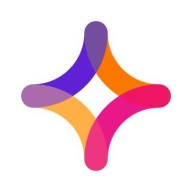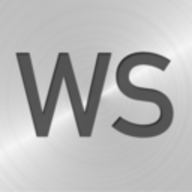

WhereScape RED and Jitterbit Harmony are data integration solutions. Jitterbit Harmony often emerges as the superior choice due to its advanced features and robust integration capabilities.
Features: WhereScape RED focuses on data warehousing automation, enabling streamlined ETL processes, metadata-driven development, and efficient impact analysis. Jitterbit Harmony offers robust integration capabilities, supporting various applications and data sources, and provides a user-friendly interface with drag-and-drop functionality for data mapping.
Room for Improvement: WhereScape RED could improve in expanding its integration capabilities and enhancing its user interface for more intuitive use. Jitterbit Harmony may enhance its pricing transparency and offer more comprehensive documentation to assist users in troubleshooting and advanced use cases.
Ease of Deployment and Customer Service: WhereScape RED is recognized for quick deployment timelines and efficient onboarding with responsive customer service. Jitterbit Harmony's cloud-based deployment offers global accessibility and scalability, supported by strong customer support channels.
Pricing and ROI: WhereScape RED provides a lower upfront cost structure, promising a quicker return on investment. Jitterbit Harmony may require higher initial investment but offers extensive integration capabilities and flexibility, providing a worthwhile long-term return.
| Product | Market Share (%) |
|---|---|
| WhereScape RED | 1.0% |
| Jitterbit Harmony | 0.6% |
| Other | 98.4% |

| Company Size | Count |
|---|---|
| Small Business | 8 |
| Midsize Enterprise | 3 |
| Large Enterprise | 1 |
| Company Size | Count |
|---|---|
| Small Business | 6 |
| Midsize Enterprise | 4 |
| Large Enterprise | 11 |
Jitterbit Harmony offers an advanced integration platform that simplifies data transformation, helps users quickly connect apps, and automates workflows, streamlining complex business processes efficiently.
Designed to meet the high demands of modern businesses, Jitterbit Harmony enables seamless integration across cloud and on-premise environments. By leveraging its powerful tools and user-friendly design, users can accelerate innovation, reduce operational costs, and enhance productivity. It bridges the gap between traditional and emerging technologies, ensuring organizations can adapt quickly to market changes and remain competitive.
What are the key features of Jitterbit Harmony?Jitterbit Harmony finds its application across numerous industries, from enhancing data integration in the healthcare sector to optimizing supply chain logistics in manufacturing. It supports financial institutions by improving transaction processing and facilitates real-time data connectivity in retail environments, making it a versatile choice for diverse industries looking to innovate rapidly.
WhereScape is data warehouse software that automates the Data Warehouse lifecycle. From implementation to maintenance, WhereScape will ensure your data warehouse projects are completed up to 5x faster than manual coding.
We monitor all Data Integration reviews to prevent fraudulent reviews and keep review quality high. We do not post reviews by company employees or direct competitors. We validate each review for authenticity via cross-reference with LinkedIn, and personal follow-up with the reviewer when necessary.